Thermocouple Quotation
| |
Sheath Diameters
0.010"
0.020"
0.032"
0.040"
0.063"
0.313"
0.125"
0.375"
0.188"
0.500"
0.250"
Recommended upper temperature limits for sheath type thermocouples
| Type |
0.040" |
0.063" |
0.125" |
0.188" |
0.250" |
0.375" |
| J |
900 °F |
1000 °F |
1000 °F |
1200 °F |
1200 °F |
1200 °F |
| K |
1400 °F |
1800 °F |
1800 °F |
2000 °F |
2000 °F |
2000 °F |
| T |
300 °F |
400 °F |
400 °F |
700 °F |
700 °F |
700 °F |
| E |
800 °F |
1000 °F |
1000 °F |
1000 °F |
1100 °F |
1200 °F |
NOTE: The recommended temperatures shown are suggested maximum temperatures at which a thermocouple should yield satisfactory life. Due to the variables of each application, in certain instances the upper limit shown maybe exceeded without decreasing thermocouple life. Conversely, other applications may decrease service life if used at recommended upper limits. Consult our factory for suggested maximum temperatures for your requirements.
Thermocouple Grade Wire
Calibration
Type |
Temperature Range |
Tolerance Whichever is GREATER |
| J |
32 to 1382°F |
0 to 750°C |
? 2.2°C or ? 0.75% |
? 1.1°C or ? 0.4% |
| K |
32 to 2282°F |
0 to 1250°C |
? 2.2°C or ? 0.75% |
? 1.1°C or ? 0.4% |
| E |
32 to 1652°F |
0 to 900°C |
? 1.7°C or ? 0.5% |
? 1.0°C or ? o.4% |
| T |
32 to 662°F |
0 to 350°C |
? 1.0°C or ? 0.75% |
? 0.5°C or ? 0.4% |
| R or S |
32 to 2642°F |
0 to 1450°C |
? 1.5° or ? 0.25% |
? 0.6°C or ? 0.4% |
| B |
1598 to 3092°F
|
870 to 1700°C |
? 0.5% |
|
| N |
32 to 2282°F |
0 to 1250°C
|
? 2.2°C or ? 0.75% |
? 1.1°C or ? 0.4% |
Thermocouple Extension Grade Wire
Calibration
Type |
Temperature Range |
Tolerance Whichever is GREATER |
| JX |
32 to 392°F |
0 to 200°C |
? 2.2°C |
? 1.1°C |
| KX |
32 to 392°F |
0 to 200°C |
? 2.2°C |
? 1.1°C |
| EX |
32 to 392°F |
0 to 200°C |
? 1.7°C |
? 1.0°C |
| TX |
32 to 212°F |
0 to 200°C |
? 1.0°C |
? 0.5°C |
| NX |
32 to 392°F |
0 to 200°C |
? 2.2° |
? 1.1°C |
Junctions
G=Grounded

Has the fastest response time ideal for measuring rapid temperature changes. Clear coating on most models provides a humidity barrier for the thermocouple. Do not use with corrosive fluids or atmospheres. See table at right for recommended atmosphere type for exposed-junction probes.
U=Ungrounded

Has a welded junction insulated from the protective sheath and is electrically isolated. Longer response time; use for conductive solutions or where isolation of the measuring circuitry is required.
E=Exposed

Has a junction welded to tip of sheath. Wires are completely sealed from contaminants. Good response time
Immersion Length/ Sheath Length
Length of sheath is measure from the sensing junction to the beginning of the first fixed obstruction, termination or transition.

Leadwire
L1=Wire Exposed
L2= PVC Insulated Lead Wire (Rated 105°C, Epoxy Potted)
L3= Teflon Insulated Lead Wire (Rated 204°C, Epoxy Potted
L4= Fiberglass Insulated Lead Wire (Rated 204°C, Epoxy Potted)
L5= Fiberglass Insulated Lead Wire (Rated 510°C, Ceramic Cement Potted
CC= Coil Cord
Lead Length

Protective Coverings
SS = Stainless Steel Overbraid
TCTU = Tinned Copper Overbraid
FA* = Stainless Steel Flex Armor
TFA* = Teflon Coated Stainless Steel Flex Armor
PFA* = PVC Coated Stainless Steel Flex Armor
* Add Length to Armor Code. (Example: PFA24)
Terminations
P = Male Plug *(MP= Mini Plug)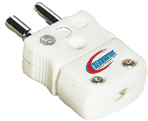
J = Female Jack * (MJ= Mini Jack) 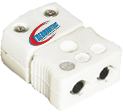
ASCH = Aluminum Screw Cover Head 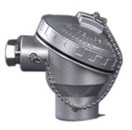
PH = Plastic Screw Cover Head 
MPH = Mini Plastic Screw Cover Head 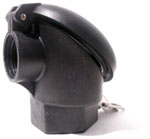
MAH = Mini Aluminum Screw Cover Head 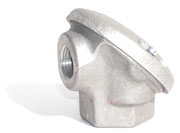
EXH = Explosion Proof Head (USL,CSA) 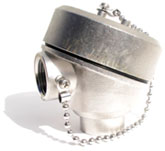
HCH = Hinged Cover Head 
HPH = High Profile Hinged Screw Cover Head 
SL = Spade Lugs (#10 Screw Size) 
BW = Bare Wire  Fixed Fitting

| FXS |
|
NPT |
| 1 |
= |
1/8" |
| 2 |
= |
1/4" |
| 3 |
= |
3/8" |
| 4 |
= |
1/2" |
| 5 |
= |
3/4" |
| 6 |
= |
1" |

| FXD |
|
Head/Process |
|
= |
1/8" x 1/8" |
| 2 |
= |
1/4" x 1/4" |
| 3 |
= |
1/2" x 3/8" |
| 4 |
= |
1/2" x 1/2" |
| 5 |
= |
3/4" x 3/4" |
Adjustable Fittings
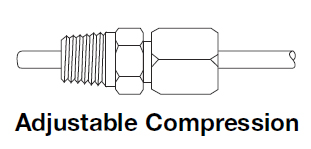
| N.P.T |
|
I.D. |
|
S.S |
|
BRASS |
|
C.S. |
| 1/8" |
= |
1/16" |
= |
SSF2 |
= |
BF2 |
= |
SF2 |
| 1/8" |
= |
1/8" |
= |
SSF4 |
= |
BF4 |
= |
SF4 |
| 1/8" |
= |
3/16" |
= |
SSF7 |
= |
BF7 |
= |
SF7 |
| 1/4" |
= |
3/16" |
= |
SSF8 |
= |
BF8 |
= |
SF8 |
| 1/8" |
= |
1/4" |
= |
SSF9 |
= |
BF9 |
= |
SF9 |
| 1/4" |
= |
1/4" |
= |
SSF10 |
= |
BF10 |
= |
SF10 |
| 1/2" |
= |
1/4" |
= |
SSF11 |
= |
BF11 |
= |
SF11 |
Follow Us


Thermocouple Types
Calibration types have been established by the American Society for Testing and Materials(ASTM)according to their temperature versus EMF characteristics in accordance with ITS-90,in standard or special tolerances.

Thermocouple Millivolts/
Temperature Curves
Also,calibration types are designed to deliver as close to a straight line voltage curve inside their temperature application range as possible. This makes it easier for an instrument or temperature controller to correctly correlate the received voltage to a particular temperature.

Thermocouple Response Time
The smaller the diameter,the faster the thermocouple responds. Grounding the junction also improves response time by approximately 50 percent based on the sensor achieving 63.2 percent of the final reading or to the first time constant. It takes approximately five time constants to obtain steady state readings.

Thermocouple Theory
A thermocouple circuit has at least two junctions: the measurement junction and a reference junction. Typically, the reference junction is created where the two wires connect to the measuring device. This second junction it is really two junctions: one for each of the two wires, but because they are assumed to be at the same temperature (isothermal) they are considered as one (thermal) junction.

Thermopile Multi-Sensor
A thermopile is a thermoelectric device that consists of an array of thermocouples connected in series. It is widely used in non-contact temperature measurement applications and temperature monitoring systems. Thermopiles detect the temperature of an object by absorbing the infared (IR) radiation that emits from the object’s surface. Most of the thermopile detectors are equipped with a black body surface for effectively absorbing the IR radiation.
Advantages Of Thermocouples
•Capable of being used to directly measure temperatures up to 2600 °C.
•The thermocouple junction may be grounded and brought into direct contact with the material being measured.
Aging Of Thermocouples
Thermoelements are often used at high temperatures and in reactive furnace atmospheres. In this case the practical lifetime is determined by aging. The thermoelectric coefficients of the wires in the area of high temperature change with time and the measurement voltage drops.
The simple relationship between the temperature difference of the joints and the measurement voltage is only correct if each wire is homogeneous. With an aged thermocouple this is not the case. Relevant for the generation of the measurement voltage are the properties of the metals at a temperature gradient. If an aged thermocouple is pulled partly out of the furnace, the aged parts from the region previously at high temperature enter the area of temperature gradient and the measurement error is significantly increased. However an aged thermocouple that is pushed deeper into the furnace gives a more accurate reading.
Thermocouple Power Production
A thermocouple can produce current, which means it can be used to drive some processes directly, without the need for extra circuitry and power sources. For example, the power from a thermocouple can activate a valve when a temperature difference arises. The electrical energy generated by a thermocouple is converted from the heat which must be supplied to the hot side to maintain the electric potential. A continuous flow of heat is necessary because the current flowing through the thermocouple tends to cause the hot side to cool down and the cold side to heat up (the Peltier effect).
Thermocouples can be connected in series to form a thermopile, where all the hot junctions are exposed to a higher and all the cold junctions to a lower temperature. The output is the sum of the voltages across the individual junctions, giving larger voltage and power output. Using the radioactive decay of transuranic elements as a heat source, this arrangement has been used to power spacecraft on missions too far from the Sun to utilize solar power.
Thermocouple Voltage-Temperature Relationship
For typical metals used in thermocouples, the output voltage increases almost linearly with the temperature difference (?T) over a bounded range of temperatures. For precise measurements or measurements outside of the linear temperature range, non-linearity must be corrected. The nonlinear relationship between the temperature difference (?T) and the output voltage (mV) of a thermocouple can be approximated by a polynomial:

The coefficients an are given for n from 0 to between 5 and 13 depending upon the metals. In some cases better accuracy is obtained with additional non-polynomial terms[4]. A database of voltage as a function of temperature, and coefficients for computation of temperature from voltage and vice-versa for many types of thermocouple is available online.
In modern equipment the equation is usually implemented in a digital controller or stored in a look-up table; older devices use analog circuits.
Piece-wise linear approximations are an alternative to polynomial corrections.
|